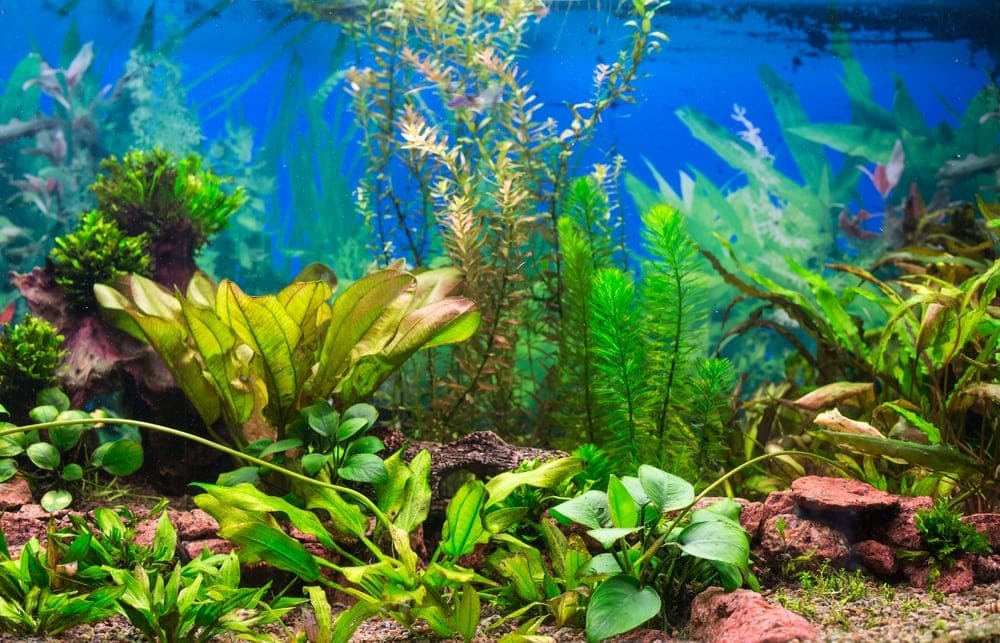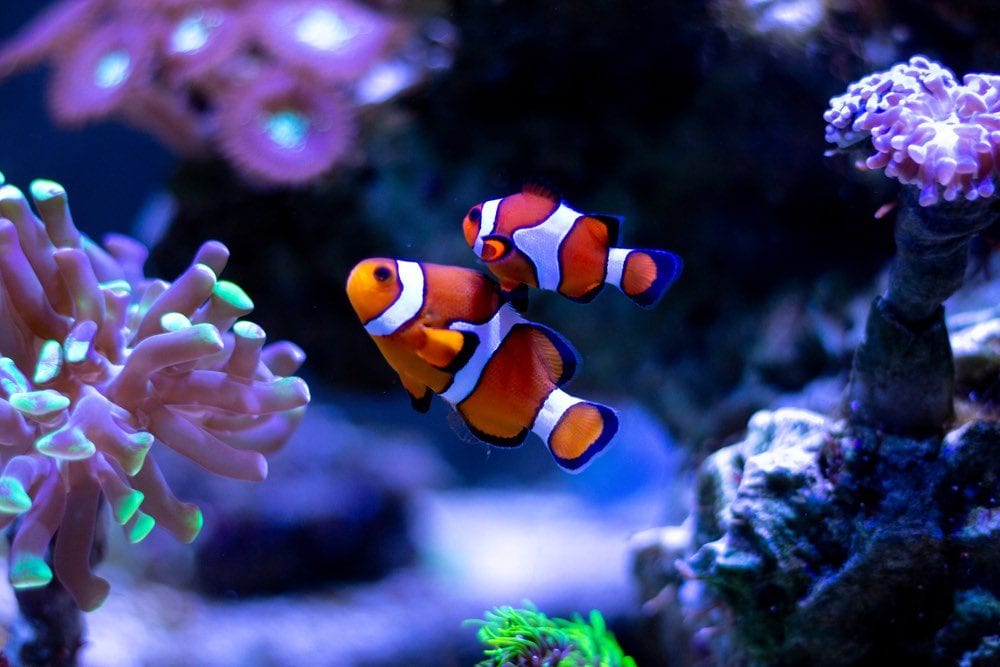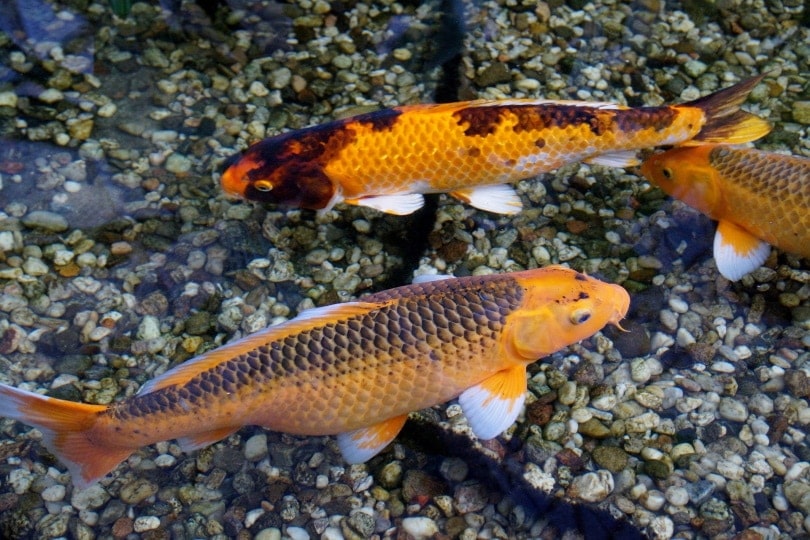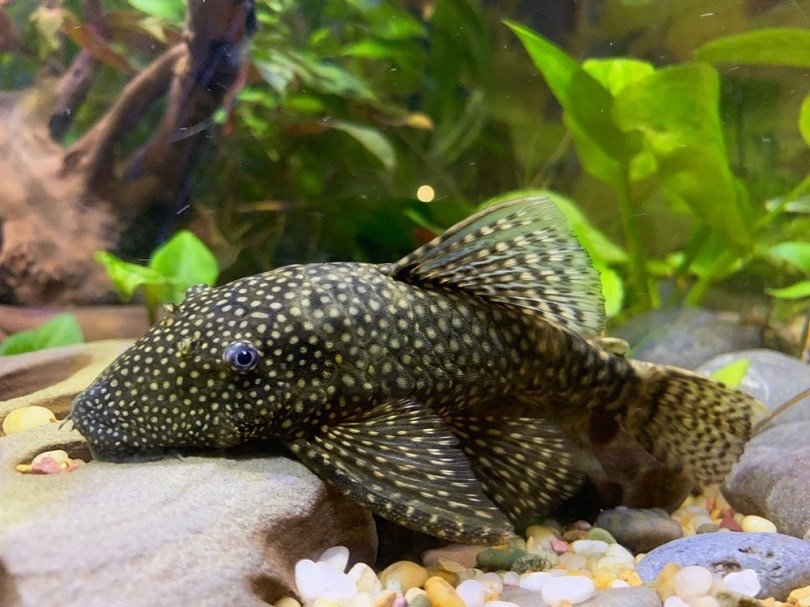How To Clean Live Aquarium Plants: 3 Easy Methods & FAQs

Updated on

Live aquarium plants make for a good addition to any fish tank, whether it be for saltwater or freshwater. Plants look nice and make your fish feel at home, Plus, they do actually help clean the water a little bit.
That being said, live aquarium plants do get dirty and covered in debris, and algae can build up on them over time. In other words, you need to keep those plants clean for a healthy tank!
 The 3 Methods to Remove Algae from Aquarium Plants
The 3 Methods to Remove Algae from Aquarium Plants
Algae and other debris can negatively affect plant health, not to mention that it just doesn’t look nice, either. Let’s talk about learning how to clean live aquarium plants for a healthy and beautiful aquarium.
1. Rubbing the Plants Clean
One of the easiest ways to clean your live aquarium plants is by rubbing the algae and other debris off of them with your fingers. Make sure that you have washed your hands really well for this, ensuring that you rinse all soap off your hands thoroughly before beginning.
This method is as simple as grabbing the leaves and stems of the plants with your forefinger and thumb and gently rubbing them so that algae and debris come off.
Make sure to use something like an aquarium vacuum or a fine net to catch all of the debris and algae that come off of the plants. This might not be the best way to get plants clean if they are already excessively dirty, but it is a good way to maintain clean plants.
2. Use a Toothbrush Or Algae Pad

If using your fingers to rub the plants clean inside of the aquarium is proving to not be enough, you will want to take it one step further. For this method, you will be using a soft toothbrush or an algae pad to remove algae and other debris from the live aquarium plants. This method is fairly easy, plus it does not involve any chemicals, something which we really like.
Start by removing the plants you have selected for cleaning from the tank. You can place them in the bathtub or sink. Remember not to remove all of the plants at once since this can cause a lot of stress for your fish. While removing them, check the plants for snails and other creatures that may be hitching a ride. You want to leave those inside of the tank.
Use the toothbrush or folded algae pad to gently clean the algae and other debris off of the plants. Make sure to use a fresh algae pad or a toothbrush specially dedicated to this. Never use an old toothbrush that once had toothpaste on it.
Remember to be gentle here. Once you are satisfied that you have scrubbed the algae off, use some clean water to rinse them before putting them back in the tank.
3. Using Bleach to Clean Aquarium Plants
If simply rubbing or brushing the algae off is not doing the trick, you might have to take it one step further. Sometimes algae and other dirt from aquariums can really stick to live aquarium plants.
For this method, using a bleach bath can help loosen any sticky particles. Even better is that bleach will effectively kill off algae and any bacteria that are on the plants.
Cleaning Aquarium Plants with Bleach
For this, you want to mix about 4 tablespoons of bleach with 4 gallons of water, thus creating a 10% bleach solution. Any stronger than 10% and it may negatively affect your plants, but any weaker than 10% and it probably won’t do the trick. Don’t use any kind of gel bleach or scented bleach because those are nearly impossible to wash off live aquarium plants.
Simply soak the live aquarium plants in the bleach solution for about 5 minutes. Really thick and hardy plants can take 5 minutes of bleach soaking with ease, but more delicate plants can only handle 2 or 3 minutes. Use your better judgment here. After you have soaked the plants in the bleach solution, use your fingers or a fine brush to rub the debris off the plants.
Afterward, make sure to use some warm water to rinse the plants thoroughly. Soak the plants in clean warm water for 10 minutes, then rinse them off again. You want to make sure that there is no remaining bleach on the plants when you put them back into the aquarium because that could make your fish very ill or even kill them. You can actually use this method for fake aquarium plants too.
You might also like our article on finding the best liquid fertilizer which you can find here.
 FAQs
FAQs
How to sterilize aquarium plants?
There are a variety of ways in which you can sterilize aquarium plants. One method of doing so is to spray your aquarium plants with hydrogen peroxide, leave them for about 10 minutes, then rinse them off. This should kill algae, bacteria, and diseases.
Another way to sterilize aquarium plants is by dipping them in a solution of potassium permanganate and then leaving them for about 10 minutes. Once again, be sure to rinse them off very well before returning them to the tank.
Something else you can try doing is to use aquarium salt to disinfect and sterilize aquarium plants. Just be sure to rinse them off very well before returning them to the tank.

Will bleach kill aquarium plants?
For the most part, yes, live aquarium plants will not be able to tolerate bleach very well at all. Some are more resistant to it than others, but mostly, they should not be bleached.
You can make a very diluted bleach solution to quickly dip your aquarium plants in, but even this may be too much for your plants to handle. If you bleach any kind of plant for too long, it may cause irreversible harm and even kill the plants.
How do you bleach dip an aquarium plant?
If there is a lot of algae present or even disease, and you choose to use bleach to try and remedy the problem and clean your aquarium plants, you need to be very careful.
If you are making a bleach solution, use no more than 5% bleach. The other 95% should be water. If you do this, dip your plants in the bleach for no more than 10 or 15 seconds at the very most. As soon as you have done this, you then want to thoroughly rinse the plants off in warm water since bleach is not good for live plants.
How often should I clean my plants?
This really depends on the specific tank conditions. If you have a well-functioning filter, fish that enjoy eating debris and algae, and you do regular water changes, in all reality, you should not have to clean aquarium plants.
When it comes down to it, aquarium plants definitely do not need to be cleaned more than once every few months. The reason for this is because moving them around is not good for them. Plants like to be stationary, so moving them for cleaning does not usually bode well.
 Conclusion
Conclusion
As you can see, cleaning live aquarium plants couldn’t be any easier. There are various methods to choose from. The first two methods are the ones you should try first, with the bleach option being the final alternative if all else fails.
See also:
Featured Image Credit: Vladyslav Starozhylov, Shutterstock
 The 3 Methods to Remove Algae from Aquarium Plants
The 3 Methods to Remove Algae from Aquarium Plants FAQs
FAQs









